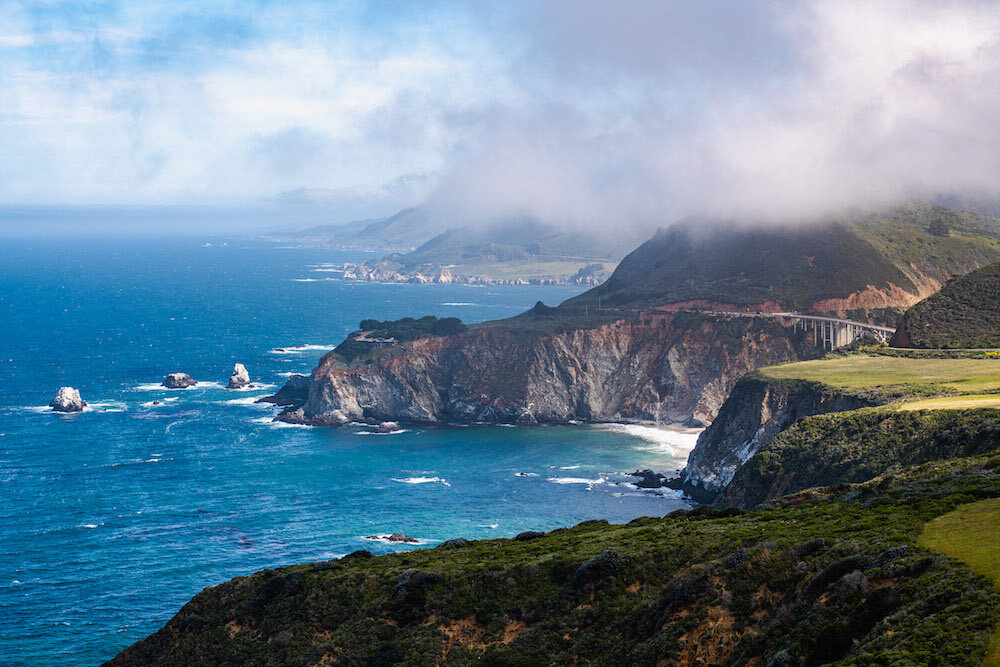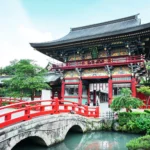Unlocking the Secrets of the Moeraki Boulders: New Zealand’s Most Mysterious Beach Treasure
Ever wondered what makes the perfectly round boulders on New Zealand’s Otago Coast so special?
The Moeraki Boulders are massive spherical rocks formed over millions of years through a natural process called concretion, and they hold deep Maori cultural significance—making them both a geological marvel and a sacred treasure.
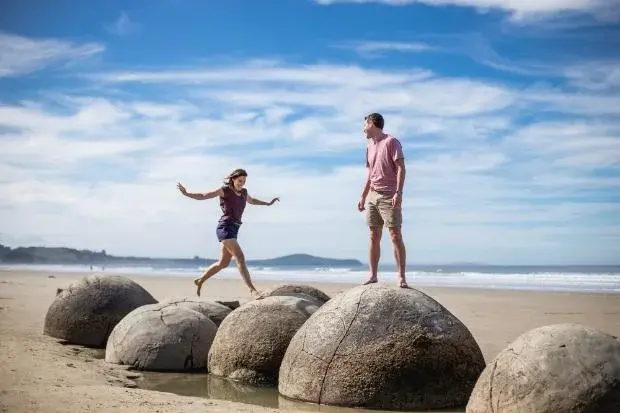
Content
What Are the Moeraki Boulders?
Positioned across the sands of Koekohe Beach on the Otago Coast, the Moeraki Boulders appear as if a sculptor scattered them on the shoreline. Some of these mysterious boulders weigh up to 7 tonnes and span more than 2 meters in diameter. Their formation is the result of mineral concretion, a process where minerals slowly accumulate around a central object within marine mudstone over millions of years.
As waves continue to erode the coastline, these geological marvels emerge from the earth, revealing their smooth, spherical forms. Visitors often describe them as nature’s sculptures—impressively symmetrical and photogenic. The boulders serve not only as an educational phenomenon in New Zealand geology but also as a source of wonder and inspiration for artists, photographers, and nature lovers.
The Maori Legend of the Moeraki Boulders
While science explains their physical formation, Maori mythology provides a more spiritual interpretation. According to the Maori legend of the Moeraki Boulders, the stones are remnants of a wrecked ancestral canoe, Araiteuru. The boulders are believed to be the petrified remains of calabashes (gourds), kumara (sweet potatoes), and eel baskets that washed ashore when the canoe was destroyed.
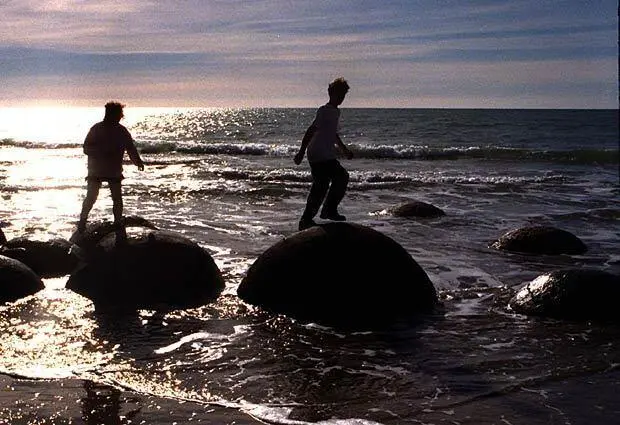
The nearby headland, known as Shag Point (Matakaea), is identified in the story as the body of the canoe itself. This connection to the past gives the Moeraki Boulders deep cultural meaning, making them more than just natural formations—they are symbolic remnants of Maori heritage and mythology.
Respecting these beliefs is vital when visiting. Observers are encouraged to appreciate not only their beauty but also their spiritual importance in New Zealand’s cultural landscape.
Plan Your Visit to Koekohe Beach and the Moeraki Boulders
For travelers eager to experience this geological treasure, the Moeraki Boulders are located along Koekohe Beach, situated between the towns of Moeraki and Hampden. The location is approximately a 1-hour drive north of Dunedin, on New Zealand’s South Island.
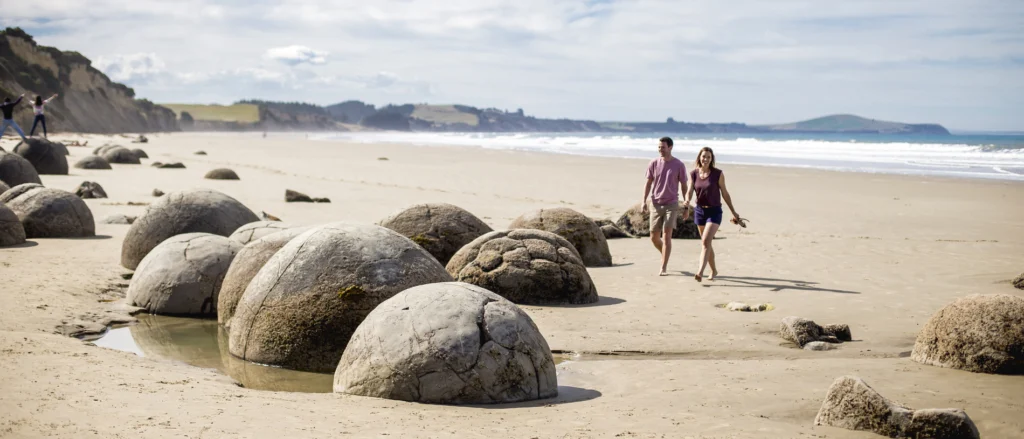
Visitor Insights:
- Ideal time to visit: Low tide is perfect for viewing and walking among the boulders.
- Best photo conditions: The Koekohe Beach sunrise casts beautiful golden tones, making the rocks appear otherworldly.
- Parking and access: Ample parking is available near the beach entrance, and a short 5-10 minute walk leads directly to the site.
Checking the Moeraki Boulders tide times beforehand ensures a smooth visit. At high tide, many of the boulders may be submerged, so timing your trip around the ocean’s rhythm is key.
Best Photography Tips for Moeraki Boulders
Photographers from around the globe visit Koekohe Beach to capture the mystical beauty of the Moeraki Boulders. These natural sculptures, set against rolling waves and a dynamic sky, provide the perfect setting for stunning imagery.
Professional photography tips include:
- Visit during golden hour: A Koekohe Beach sunrise yields warm light that enhances the texture and form of the boulders.
- Bring a wide-angle lens: To fully capture the scale and setting of the beach.
- Try long exposures: Use a tripod to create silky ocean waves against the sharp, rounded edges of the boulders.
- Use reflections: Small water pools often form around the boulders at low tide, allowing for creative mirrored shots.
These techniques highlight the natural elegance of the stones and turn simple beach snapshots into compelling works of art.
Explore Nearby Wonders: Katiki Boulders, Shag Point, and More
The region around Koekohe Beach is rich in geological and ecological interest. Just a short drive north, visitors can discover the Katiki Boulders—less famous than the Moeraki giants, but no less impressive. These boulders are partly embedded in cliff walls, giving them an untouched and ancient appearance.
Continue on to Shag Point (Matakaea) for a glimpse of coastal wildlife, including fur seals lounging on rocky outcrops. This location also offers panoramic views of the ocean, with educational signposts detailing the area’s Maori history and marine biodiversity.
Travelers often combine visits to the Moeraki Boulders, Katiki Boulders, and Shag Point for a well-rounded day of exploration and cultural enrichment.
Moeraki Boulders Facts You Didn’t Know
Despite their fame, many visitors are unaware of the fascinating facts that surround the Moeraki Boulders:
- Formed over 60 million years ago, these stones are among the oldest beach formations in the Southern Hemisphere.
- Their spherical shape is unusually consistent—some even call them the “dragon eggs of New Zealand.”
- Cracks that appear on the surface of many boulders are called “septaria,” which often contain calcite crystals inside.
- As the coastline erodes, new boulders are constantly being revealed, while older ones slowly break apart.
This constant transformation is what keeps the Moeraki Boulders formation dynamic and ever-evolving, providing something new for repeat visitors to discover.
The Legacy and Significance of the Moeraki Boulders
The enduring appeal of the Moeraki Boulders lies in their multifaceted identity. Scientifically, they are a textbook example of mineral concretion, offering insights into the natural processes that shaped the Earth’s surface. Spiritually, they embody the rich traditions of Maori culture, reinforcing their value beyond visual beauty.
The site’s preservation is carefully managed to protect its natural and cultural legacy. Visitors are encouraged not to climb on or move the boulders, helping to prevent damage and erosion. Guided tours and on-site information boards allow tourists to learn about both the geological and cultural background of this sacred destination.
A visit to the Moeraki Boulders is more than sightseeing—it’s a journey through New Zealand’s geological timeline and a walk through the spiritual stories of its first people.
Conclusion
The Moeraki Boulders are more than an iconic beach attraction—they’re a confluence of nature’s artistry and cultural storytelling. Nestled on Koekohe Beach, these striking formations continue to captivate visitors with their shape, size, and symbolism.
Whether you come to photograph the Koekohe Beach sunrise, explore the Maori legend of the Moeraki Boulders, or uncover New Zealand geology facts, the experience offers meaning on many levels. Be sure to explore nearby marvels like the Katiki Boulders and Shag Point, which extend your adventure with even more to appreciate.
FAQs
What is the best time to visit the Moeraki Boulders?
The best time to visit the Moeraki is during low tide and sunrise, when more boulders are visible and lighting is perfect for photography.
What is the Maori legend behind the Moeraki?
According to Maori legend, the Moeraki are petrified food baskets and gourds from a wrecked ancestral canoe called Araiteuru.

Hello, I’m Rex Crist. My goal is to show that traveling can be affordable and fun! I love to explore new places and experience different cultures. I also like iced coffee, iced tea, and ice cream (in that order).

